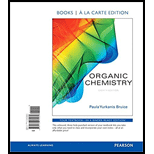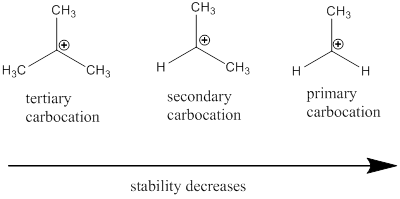
Concept explainers
INTREPRETATION:
The reason behind for formation of identical amounts of enantiomers formed reaction between
CONCEPT INTRODUCTION:
Nucleophile: Nucleophiles are electron rich compounds which donates electrons to electrophilic compounds which results in bond formation.
Nucleophilic nature depends on the negative charge present in the molecule, the solvent in which it present and the electronegativity of the atom.
Electrophile: Electrophiles are electron deficient compounds which accepts electrons from nucleophiles that results in bond formation.
The curved arrows are generally used to indicate the flow of electrons present in the reaction.
Addition Reaction: It is defined as chemical reaction in which two given molecules combines and forms product. The types of addition reactions are electrophilic addition, nucleophilic addition, free radical additions and cycloadditions. Generally, compounds with carbon-hetero atom bonds favors addition reaction.
In addition reaction of
Oxidation Reaction: It involves loss of electrons, addition of oxygen atoms or removal of hydrogen atoms.
Oxidizing Reagents: The chemical agents used to add oxygen or remove hydrogen which finally reduced on oxidizing the other compound.
Carbocation: it is carbon ion that bears a positive charge on it.
Carbocation stability order:

Want to see the full answer?
Check out a sample textbook solution
Chapter 6 Solutions
ORGANIC CHEMISTRY (LL)-W/MOD.MASTERING.
- 1, part A) We observe 6 carbon stereocenters in the molecule below. Indicate each stereocenter, and give the absolute S or R configuration. 1, part B) Indicate each stereoisomer in this molecule, and give the absolute S or R configuration. Then, indicate E or Z configuration of all alkenes in it (*ignoring aromatic ring*).arrow_forwardWhat is the absolute stereochemistry at carbons 1,2,3, and 5 ?arrow_forwardDraw the products of the SN1 reaction below and use wedge-and-dash bonds to indicate the stereochemistry of any stereogenic centers.arrow_forward
- Which of the following groups has the highest priority according to the Cahn-Ingold-Prelog sequence rules? a. CH2Cl b. CHO c. CH2OH d. CH3arrow_forwardAssign, the correct stereochemical descriptor (R or S) to the following molecules.arrow_forwardDraw the product of the following reaction. If the terminal sp2 carbon of the substituent attached to the benzene ring is labeled with 14C, where will the label be in the product?arrow_forward
- Which stereoisomer of 3-hexene forms a meso compound when it reacts with Br2?arrow_forwardHow many stereoisomers of 2-methyl-heptan-4-ol could form? How many would you expect to form? In what ratios? (All equal?). Explain your answer Please explain clearly why the ratio is 1:1. Thank you!arrow_forwardOrder the following substituents from highest priority to lowest priority: CH3, OH, H,F. Use the Cahn-Ingold-Prelog priority system. a. F, CH3, OH, H b. H, CH3, F, OH c. F, OH, CH3, H d. H, CH3, OH, Farrow_forward
- Assign the stereochemical configuration (E or Z) for the alkene below. Show your work, indicating clearly which groups are assigned high priority (e.g., through assigning the groups numbers, circling only the high priority groups, or labeling groups as high or low).arrow_forwardIn each case, assign the correct configuration of R or S, 1 is highest priority, 4 is lowest priority.arrow_forwardI was wondering if theres an error in the answer booklet. Because we have a double bond so I thought it was E and 3S because of the stereocenter?arrow_forward
 Organic Chemistry: A Guided InquiryChemistryISBN:9780618974122Author:Andrei StraumanisPublisher:Cengage Learning
Organic Chemistry: A Guided InquiryChemistryISBN:9780618974122Author:Andrei StraumanisPublisher:Cengage Learning

